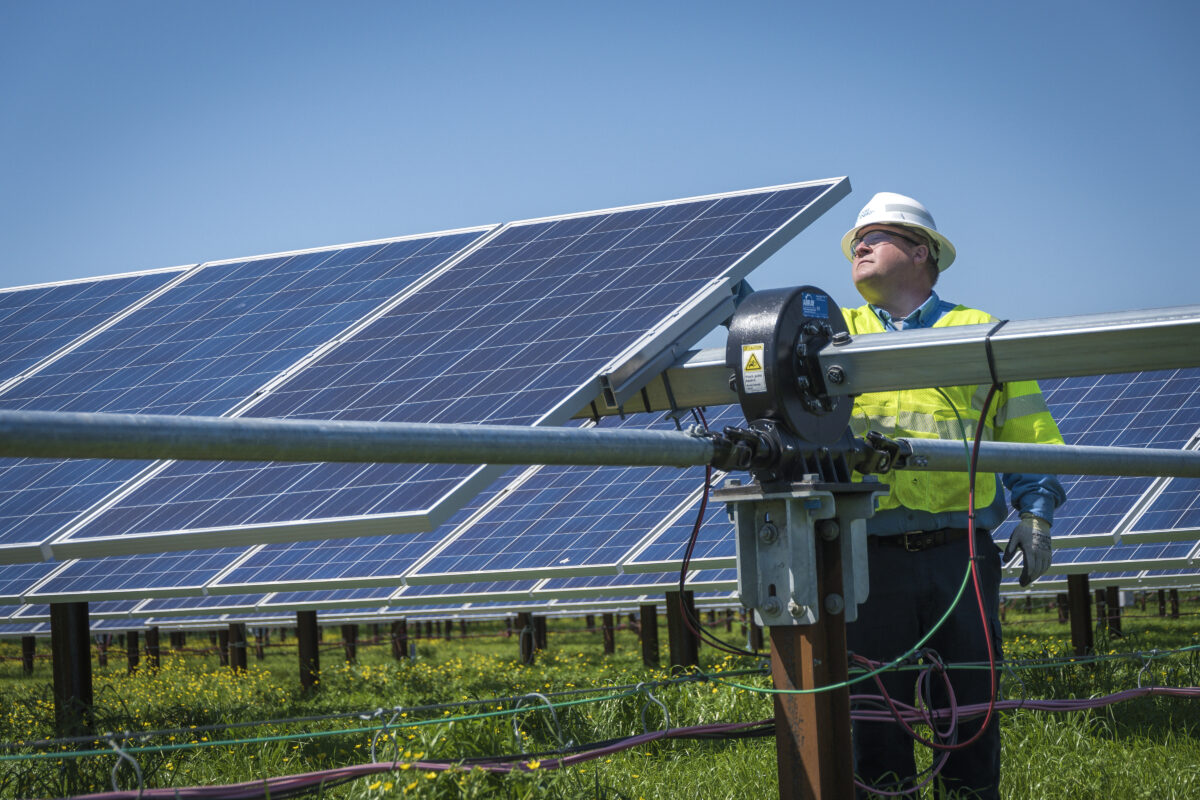Duke Energy is set to break ground on the country’s first demonstration project with an end-to-end system to produce, store and combust entirely green hydrogen.
The facility will be located at the utility’s DeBary solar plant in Volusia County, Florida, which currently has a 74.5 MW capacity.
Once completed, the clean energy from this facility will be routed to two 1 MW electrolyzer systems, which will split water into oxygen and green hydrogen. The hydrogen will then be transferred to reinforced containers, where it will be stored until needed. When electricity demand is especially high, the green hydrogen will be passed through a combustion turbine to convert it into power.
The combustion turbine will be upgraded with technology from GE Vernova to run on either a blend of natural gas and hydrogen, or up to 100% hydrogen – the first turbine in the country that can get to such a high hydrogen percentage. The demonstration project will begin construction later this year and is expected to be fully operational sometime in 2024.
Green hydrogen can play a key role in ensuring the reliability of a highly-renewable electric grid, since it serves as a “dispatchable” energy source that is available on demand. Unlike solar and wind power, it is not dependent on the time of day or weather. Moreover, using solar energy to create green hydrogen can optimize the solar plants, according to Duke Energy.
“Relying on intermittent energy sources without available dispatchable energy sources would put our future electric system at risk of having insufficient energy to serve customer demand,” the utility said.
Duke Energy is aiming to reduce its carbon emissions from electricity generation by 50% by 2030, and achieve net-zero emissions by the middle of the century. As part of this, it is looking to decrease its use of coal to less than 5% of total generation by 2030, and phase out the fossil fuel entirely by 2035.
The utility anticipates that hydrogen could play a major role in its clean energy future, said Regis Repko, Duke Energy’s senior vice president of generation and transmission strategy.
“Hydrogen has significant potential for decarbonization across all sectors of the U.S. economy. It is a clean energy also capable of long-duration storage, which would help Duke Energy ensure grid reliability as we continue adding more renewable energy sources to our system,” Repko said.
While adding hydrogen facilities can help optimize solar plants, some industry players say that driving down solar’s levelized cost of energy – below $20 a megawatt hour – can also spur the adoption of solar for green hydrogen production.
In fact, producing green hydrogen itself can be profitable in “wide swaths of the U.S.,” a report from policy consultancy Energy Innovation found – regions where the cost of electricity from new wind and solar averages less than $25 per MWh. And as the capital costs of electrolyzers decline, green hydrogen projects are likely to become economic in more areas.
This content is protected by copyright and may not be reused. If you want to cooperate with us and would like to reuse some of our content, please contact: editors@pv-magazine.com.








By submitting this form you agree to pv magazine using your data for the purposes of publishing your comment.
Your personal data will only be disclosed or otherwise transmitted to third parties for the purposes of spam filtering or if this is necessary for technical maintenance of the website. Any other transfer to third parties will not take place unless this is justified on the basis of applicable data protection regulations or if pv magazine is legally obliged to do so.
You may revoke this consent at any time with effect for the future, in which case your personal data will be deleted immediately. Otherwise, your data will be deleted if pv magazine has processed your request or the purpose of data storage is fulfilled.
Further information on data privacy can be found in our Data Protection Policy.